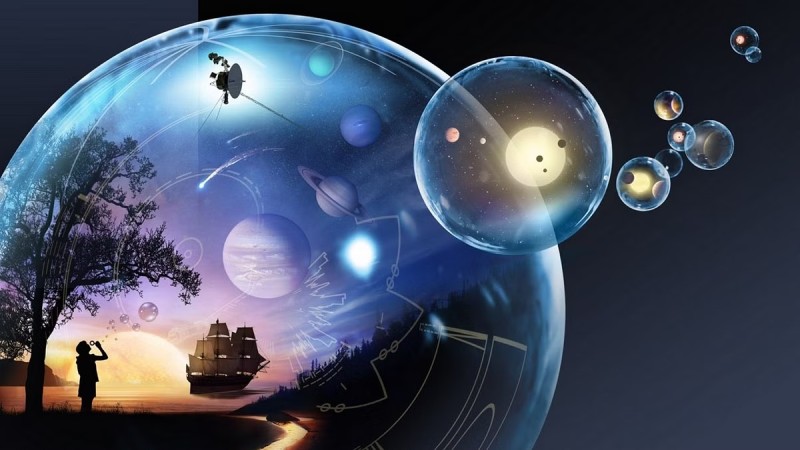Science
9 Science Events You Can Watch in 2024

This year’s research will be shaped by several innovations, including ultrafast supercomputers, lunar missions, and advanced artificial intelligence tools.
- AI develops
This year, the emergence of ChatGPT had a significant impact on science. The chatbot’s creator, OpenAI, located in San Francisco, California, is expected to release GPT-5, the next iteration of the AI model, towards the end of 2019. GPT-5 will probably exhibit more sophisticated features than GPT-4. Scientists are also keeping an eye on the launch of Google’s GPT-4 rival, Gemini. A variety of input formats, including text, computer code, images, audio, and video, can be processed by the large language model.
Next year will also see the release of an upgraded version of AlphaFold, an AI tool developed by Google DeepMind that has been used by researchers to accurately predict the three-dimensional shapes of proteins. With atomic precision, the AI will be able to simulate the interactions between proteins, nucleic acids, and other molecules, potentially leading to new avenues for drug discovery and design.
Significant queries remain regarding regulations. In the middle of 2024, the United Nations High-Level Advisory Body on Artificial Intelligence will release its final report, which will include recommendations for global AI regulation.
- Aiming for the stars
Beginning in late 2024, the Vera C. Rubin Observatory in Chile will start using some of its instruments in preparation for its ten-year survey of the sky in the Southern Hemisphere. The observatory’s massive 3,200-megapixel camera and 8.4-meter telescope are expected to help scientists find numerous new near-Earth asteroids and transitory phenomena.
Midway through 2024, the Simons Observatory in Chile’s Atacama Desert will be finished. The goal of this next-generation cosmology experiment is to search the cosmic microwave background for evidence of primordial gravitational waves, or the afterglow of the Big Bang. Up to 50,000 light-collecting detectors will be installed on its telescopes, ten times more than what is being done in similar projects at the moment.
Astronomers are still concerned that the growing number of bright satellite constellations clogging up the night sky with light could make new data from ground-based telescopes useless.
- Mosquitoes with weapons
Next year, at a factory in Brazil, the World Mosquito Program will begin producing disease-fighting mosquitoes. A bacterial strain that infects the mosquitoes stops them from spreading harmful viruses, potentially protecting up to 70 million people from illnesses like dengue and zika. Over the next ten years, the nonprofit organization will generate up to five billion mosquitoes infected with bacteria annually.
- Beyond the pandemic
The US government is supporting the trials of three next-generation vaccines, two intranasal vaccines that try to prevent infection by building immunity in airway tissues, as the world moves past the COVID-19 pandemic’s emergency phase. The third vaccine, an mRNA vaccine, is supposed to provide long-lasting protection against a variety of SARS-CoV-2 variants by increasing T-cell responses and antibodies.
In the meantime, the 77th World Health Assembly in May is when the World Health Organization is expected to reveal the final draft of its pandemic treaty. The agreement aims to provide governments with improved tools to prevent and control pandemics in the future. The terms of the agreement, including whether any of its provisions will be enforceable by law, will be determined by the 194 WHO member states.
Ensuring equal access to the resources—vaccines, data, and expertise—necessary to avert pandemics is at the core of the negotiations.
- Moon missions
NASA is launching a crewed lunar mission for the first time since the 1970s. Four astronauts, three men and one woman, will fly around the Moon for ten days aboard the Orion spacecraft during Artemis II, which could launch as early as November of next year. The Artemis II mission will prepare the way for the Artemis III mission, which will send the first woman and the next man to set foot on the moon. Additionally, China is getting ready for the 2024 launch of its Chang’e-6 lunar sample-return mission. The mission will be the first to gather samples from the Moon’s far side if it is successful.
NASA’s Clipper spacecraft is one of the missions to study moons in the outer Solar System; it will launch toward Jupiter’s moon Europa in October of next year. Its goal is to ascertain whether life could exist in the lunar subterranean ocean. The goal of Japan’s Martian Moons eXploration (MMX) mission is to visit Phobos and Deimos, two of Mars’ moons, in 2024. It is scheduled to land on Phobos in 2029 and gather surface samples before returning to Earth.
- Illuminating dark matter
In 2024, the results of an experiment to find axions—dark matter particles—will be revealed. Though the Sun is thought to emit axions, which are then converted into light, the tiny particles have not yet been observed experimentally due to the need for a very strong magnetic field and sensitive detection instruments. Using a solar telescope consisting of a 10-meter-long magnet and extremely sensitive noise-free X-ray detectors, the BabyIAXO experiment at the German Electron Synchrotron in Hamburg tracks the Sun’s center for 12 hours every day to record the conversion of axions into photons.
Furthermore, 2024 may be the year that researchers determine the mass of the neutrino, the most enigmatic particle in the particle physics standard model. According to the findings of the 2022 Karlsruhe Tritium Neutrino experiment, the maximum mass of a neutrino was found to be 0.8 electron volts. By 2024, when data collection is complete, researchers should be able to measure the minuscule particles with certainty.
- The consciousness debate: round two
We may learn more about the neural underpinnings of consciousness in the coming year. By the end of 2024, the results of the second experiment in a massive project that is testing two theories of consciousness through a series of adversarial experiments should be available. Both theories fell short of fully explaining the observed brain-imaging data in the first round, ending a 25-year wager in favor of philosophy over neuroscience. Neuroscience may get closer to understanding the enigmas of subjective experience with the second round.
- Saving the planet
The International Court of Justice in The Hague may rule on the legal ramifications for individuals who are thought to be causing climate damage in the second half of 2024, as well as provide an opinion on nations’ legal obligations to combat climate change. The court’s influence can encourage nations to bolster their climate goals and can be used as support in domestic legal proceedings, even though the decision will not have legal force.
Next year will see the conclusion of negotiations for the UN plastics treaty, which aims to create a legally binding global agreement to eradicate plastic pollution. Ten billion tonnes of plastic have been produced worldwide since the 1950s; of that, over seven billion tonnes are currently waste, most of which is contaminating oceans and endangering wildlife. However, scientists are becoming increasingly concerned that the UN negotiations, which began last year, are moving too slowly and won’t achieve the desired outcomes.
- Super-fast supercomputers
Jupiter, Europe’s first exascale supercomputer, will be turned on by researchers early in the following year. One quintillion, or a billion billion, calculations can be completed by the massive machine every second. Researchers will use the device to run high-resolution simulations of Earth’s climate and to build “digital twin” models of the human heart and brain for medical purposes.
In 2024, two exascale machines will be installed by American researchers: El Capitan at Lawrence Livermore National Laboratory in California, and Aurora at Argonne National Laboratory in Lemont, Illinois. El Capitan will be used to model the effects of nuclear weapon explosions, and Aurora will be used to map the neural circuits of the brain.
-

 Business3 weeks ago
Business3 weeks agoPrakash and Kamal Hinduja: Driving Social and Environmental Change
-
Education4 weeks ago
Fred DuVal: University Leadership as a Critical Resource for Climate Change Research and Life-Saving Solutions
-

 Cryptocurrency3 weeks ago
Cryptocurrency3 weeks agoDesigned For The Masses: How Akasha (AK1111) Is Unlocking Crypto For The Next Billion Users
-

 Health3 weeks ago
Health3 weeks agoThe Hinduja Brothers Commitment to Global Health: Empowering Communities Across Borders
-

 Cryptocurrency4 weeks ago
Cryptocurrency4 weeks agoNexaglobal & Future World Token (FWT): Could This Be the Next Big Crypto Investment of 2025?
-

 Startup2 weeks ago
Startup2 weeks agoCost-Saving Strategies Every Small Business Owner Should Know to Boost Efficiency
-

 Startup3 weeks ago
Startup3 weeks agoMatthew Denegre on the Art of Deal Sourcing: Finding the Right Investment Opportunities
-

 Health2 weeks ago
Health2 weeks agoSt. John’s Community Health Examines Innovations in Pharmacy Access













